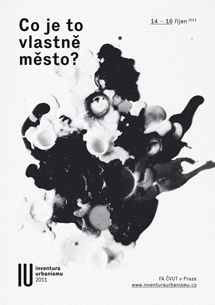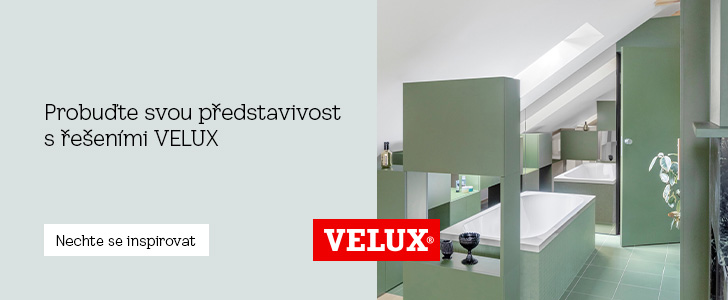
Irena Fialová : URBAN PROJECT - CITY PROJECT
inventory of urbanism 2011
 |
The Urban Project has been used as a tool for solving complex urban problems and preparing significant investment actions since the late 1970s, for such complex and unpredictable situations of contemporary cities that modernist spatial plans have failed to address. Modernist spatial visions, which were based on strict segregation of functions, social hierarchy of values, and control over the sequence of implementation, began to hinder the development of the free market and investments from transnational capital. They were too slow, rigid, and technocratic, unable to handle the complexity, chaotic nature, and uncertainty of neo-liberal capitalism, which maximally deregulates financial transactions and flows, minimizes local specificities and the power of the state, the result of which is what we call contemporary globalization.
A basic characteristic of investments from global capital is, among other things, that they primarily target those places and sectors that promise the highest short-term profit. Their main goal is not to increase the natural or utility value of things, beautify the city, harmonize the landscape, or make society fairer. Their primary aim is to increase the market value of things, and therefore they do not invest in anything that cannot be exchanged quickly and effectively on the global market. Difficult to exchange are any long-term investments, such as those in sustainable land development or quality, durable, and timeless architecture of the city.
Western European countries traditionally belong either to the so-called Anglo-Saxon model, which uses customary law and a lower degree of state regulation, or to the so-called Rhine model, which uses civil law similarly to ours and has a higher degree of state regulation. Post-socialist states entered the globalizing world with almost a 15-year delay, and thus more quickly believed that "the invisible hand of the market will solve everything." Paradoxically, therefore, we currently have less ability for public control over the transformation of our cities and landscapes than many Western European countries. Any serious care for public or municipal welfare is seen as inappropriate, idealistic, or even reactionary.
The Urban Project is a planning tool widely used precisely in those countries where the state has not forsaken its role as an initiator of change and a coordinator of various interest groups in the spatial process. We therefore encounter Projet Urbain in France, Progetto Urbano in Italy, Projecto Urbano in Spain. With different terminology, but a similar tool, we find it in Dutch Public Private Partnerships, and last but not least in liberal Britain, for example, in the construction of Docklands or Olympic London, or in projects hidden under the names Urban Regeneration, Urban Redevelopment, Urban Design Scheme, and Urban Renaissance.
In post-socialist countries, in such cases, we encounter more or less formal regulatory roles of the state and the city, but almost never do cities initiate and actively manage their spatial development projects themselves. It is as if socialist central planning had transformed with a single wave of a wand into "à la carte" planning, driven by the wishes and needs of the free market and its players, who exist outside the physical territory of cities, and beyond the borders of the states where these cities are located. In this context, it should be noted that post-socialist countries have not undergone a three-generation development that would have stabilized the Urban Project as a legitimate tool of urbanism and spatial planning.
Since the 1990s, when the tension between the demands of the free market, which requires "more freedom," and the demands of cities, which need "more city," began to escalate, the Urban Project has started to be used as an operational tool of the spatial plan for the development of areas that are not stabilized, into which global investors are directing their interests, and where it is necessary to complexly connect their short-term interests with the short-term and long-term interests of the city and its citizens. This means that the Urban Project complements the spatial plan of the city where there is a risk of losing control over its spatial development or compromising the qualities of the city – its urban culture, historical continuity, public spaces, municipal and social policy, or its own vision of development corresponding to local human and material resources.
A good Urban Project is always connective, never restrictive. For example, the projects of Manuel Sola-Morales, which he calls Urban Acupuncture, are among the exemplary Urban Projects that sometimes, even with very minor interventions, release new energies, activate new connections, and serve the city as a whole. There are many good results of transparently and responsibly managed Urban Projects, proportionate to how socially-oriented, civically high-quality, and transparently managed its spatial administration is. These include projects in Paris, Bilbao, Hannover, Berlin, or Barcelona. These cities succeed in caring for their citizens and the city hand in hand.
However, there are also Urban Projects whose goal is not to bring quality to the territory but to bypass the complex process of negotiation and expedite the entire process. In such cases, project management is taken over by a private entity, and public administration then plays only a formal role, just as if it were corrupted. Sometimes such projects are shielded by the names of famous architects and firms and focus primarily on external form in the name of visibility and marketing of the city, and thus increasing the market value of the investment itself. Although such a marketing move may economically benefit the city, it brings almost nothing to its inhabitants. The result of "false" Urban Projects is insufficient diversity of functions and scales, which is unable to connect with the given part of the city and bring it new impulses and real life. We have colloquially referred to these projects in Turin as Urban Products, or false Urban Projects.
General principles of the urban project – UP (according to G. Pinson, 2000):
1. UP is a process and an outcome, there is no outcome without its own process.
2. UP is about "building the city on the city," not about growth, sprawl, or reconstruction.
3. UP addresses problems comprehensively and integratively, not separating various perspectives (political, economic, social, cultural, technological, ecological).
4. UP creates a balance between short-term and long-term goals, it does not rush nor is it a utopia; it is about sustainable development of the city.
5. UP concerns all citizens of the city, collaborates with them, does not work outside or against them, prioritizes the general over the individual, negotiates, and comes to agreements.
6. UP is an acceptable and feasible tool, which is adaptable and changeable; it is not an ideal, but a feasible agreement.
7. UP is an open adaptable system, which is not fixed in time, nor unchangeable.
8. UP is a complex multifunctional technical tool that can work with the complexity, variability, and uncertainty of the contemporary city.
Examples of successful urban projects (according to G. Cina 2011):
1. Barcelona – Vila Olympica
2. Amsterdam – Borneo Sporenburg
3. Berlin – IBA
4. Hague – The Hague City Hall
5. Paris – Parc de Bercy, Plaine St. Denis
6. Saint-Nazare – Ville-Port
7. Turin – Spina 2
8. Hannover – Kronberg
The English translation is powered by AI tool. Switch to Czech to view the original text source.











